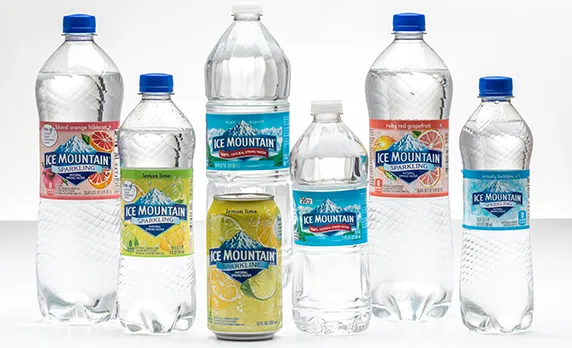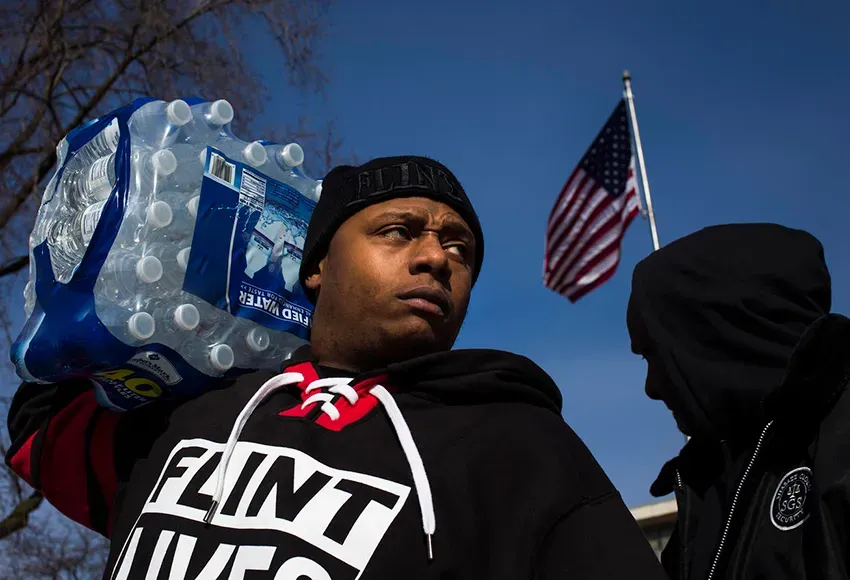Water is the liquid that descends from the clouds as rain; forms streams, lakes, and seas; and is a major constituent of all living matter. It is a basic need but also a public resource that has been misused, mistreated, and exploited for money.
The $35 billion bottled water industry barely existed 40 years ago, and now people drink twice as much bottled water as coffee and ten times as much as beer. Distributors claim they aren't competing with tap water, just sugary sodas and juices. However, sales and surveys show that many Americans prefer bottled water to tap.
Despite the many people who do have access to safe drinking water in our country, the unfortunately high numbers without have led many to form a deep-seated distrust of their home water supply. There have been documented incidents of toxic water in homes that have helped this distrust grow.
In 2014, Flint, Michigan, experienced a water crisis when the city switched its drinking water supply from Detroit's system to the Flint River. This cost-effective switch turned out to be a life-threatening disaster, as rancid, discolored water was pumped into the houses of thousands of people. For 18 months, it caused skin rashes, hair loss, sickness, and deaths.
The city had failed to properly treat and test water it knew had a long history of being highly corrosive. For over a hundred years, the Flint River had been used as a disposal site. Waste from car factories, meatpacking plants, and lumber mills, as well as sewage from the city's waste treatment plant and agriculture runoff all found their way into the river running through the heart of Flint. This is the water that officials deemed an acceptable alternative for the people of Flint to drink while a new water pipeline from Lake Huron was being built.
Flint, the birthplace of General Motors, was once a thriving city, whose prosperity came to a halt in the '80s with the rise in oil prices and the increased importation of auto parts. The city's population of 200,000 was cut in half, as the workers that could relocate did so for better career opportunities. The majority of the 100,000 residents left in Flint are Black; about 45% live below the poverty line.

In this time of crisis, Nestlé Waters promised to give away six million bottles of its Ice Mountain brand to aid Flint residents. While on the surface this appears to be charity, critics argue that Nestlé is taking a unique opportunity to exploit people in need to promote its business.
Since 2005 Nestlé has pumped half a billion gallons of water out of Michigan's wells and into bottles just a hundred miles north of Flint. Paying the same rate as the residents ($3.60 per gallon), Nestlé obtained the water it now sells for next to nothing. The water it donated to Flint equals only two days' worth of output from its packaging facility.
In 2019 – five years after the crisis in Flint began – approximately $400 million in state and federal funds had been spent to secure a clean water source for residents. Filters have been distributed to all who want them, and copper pipes have been laid to many homes that needed them.
But thousands of Flint residents still get their water from lead pipes. Flint's lead levels have been consistently recorded at 5ppb (parts per billion) or more. This is below the federal-action level for lead, but it is also not a health-based number. The EPA states that there is no safe level of lead in water, so continuing to use lead pipes for thousands of Flint residents is a persistent problem. While many government officials argue that there isn't any money for fixing water issues, the $32 billion spent on bottled water says otherwise.
Nestlé Water, which owned the majority of North American bottled water brands until early this year (including Poland Spring, Deer Park, Ozarka, Ice Mountain, Zephyrhills, Arrowhead, Pure Life, and Splash) and was recently sold to One Rock Capital Partners LLC, had a monopoly on the natural spring water market, making billions of dollars in profit and paying as little as $200 per facility. Including the facility a hundred miles north of Flint.
The money Flint needed to provide safe public water could have been donated by the company making a profit from the water taken from that community. However, most can't see past the free bottles in front of them. While bottled water is convenient, it doesn't fix the problem of unsafe public water in homes. It relocates money to a primarily unnecessary product that could be used to provide this necessary service to the people who need it.


